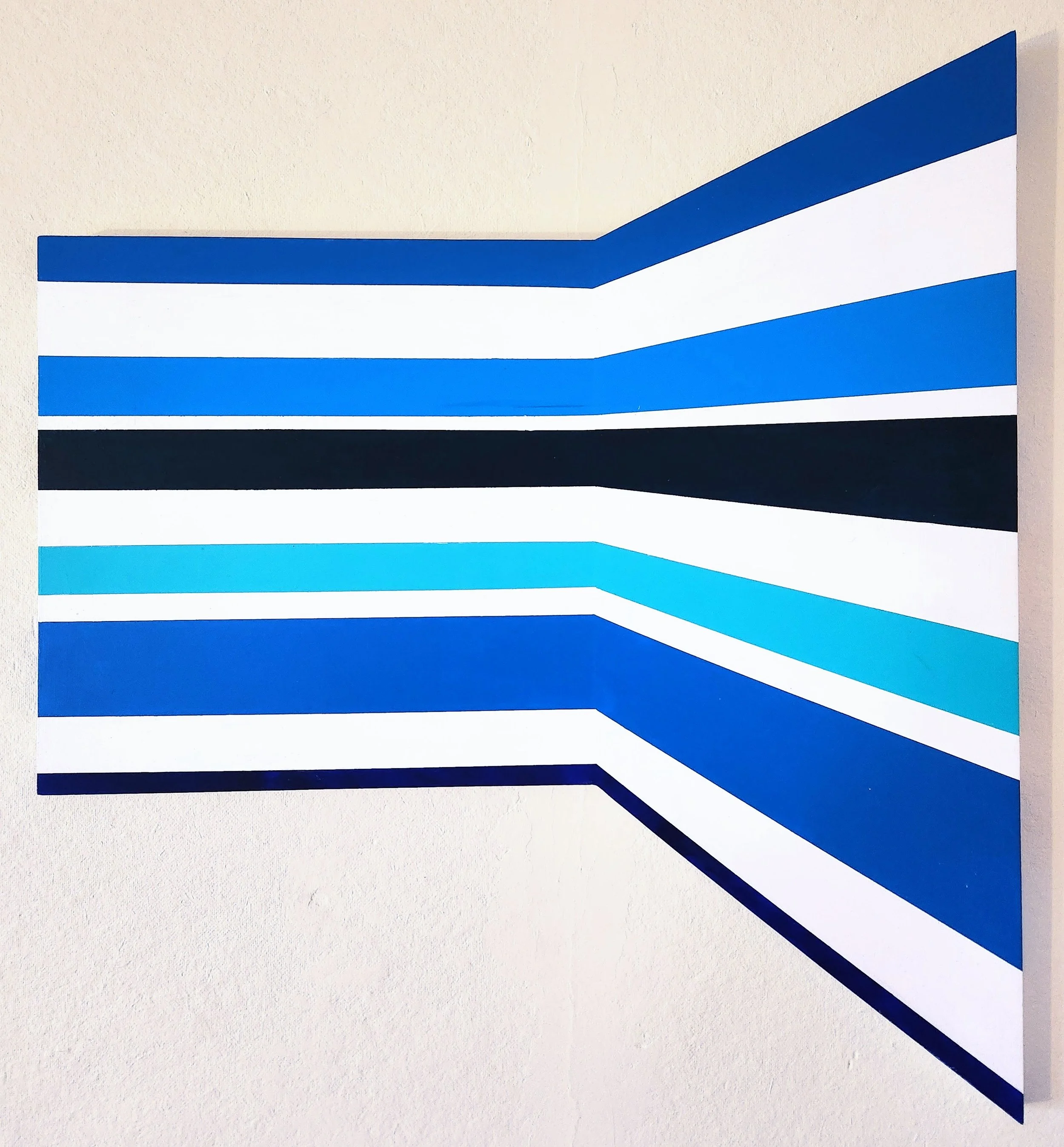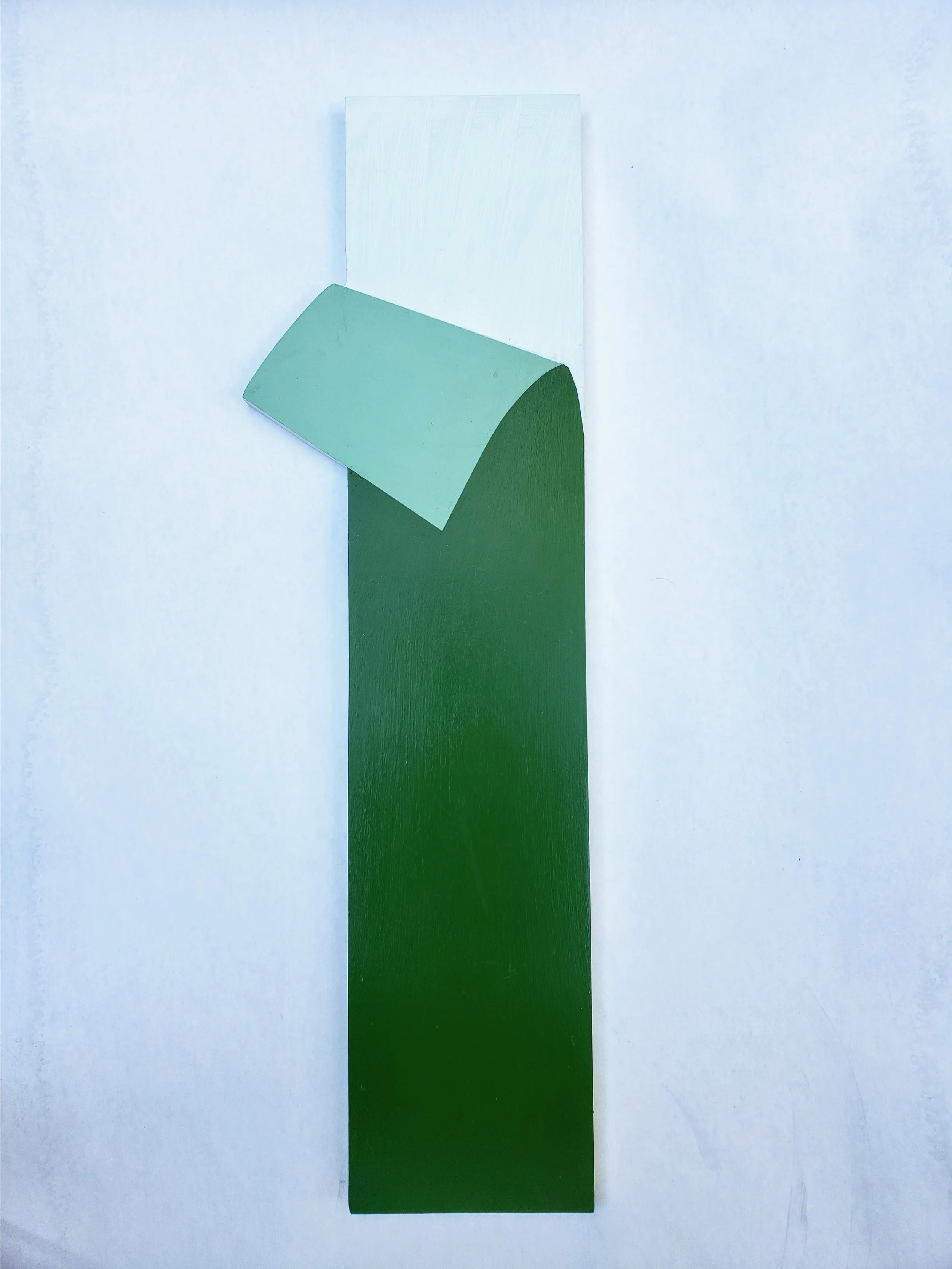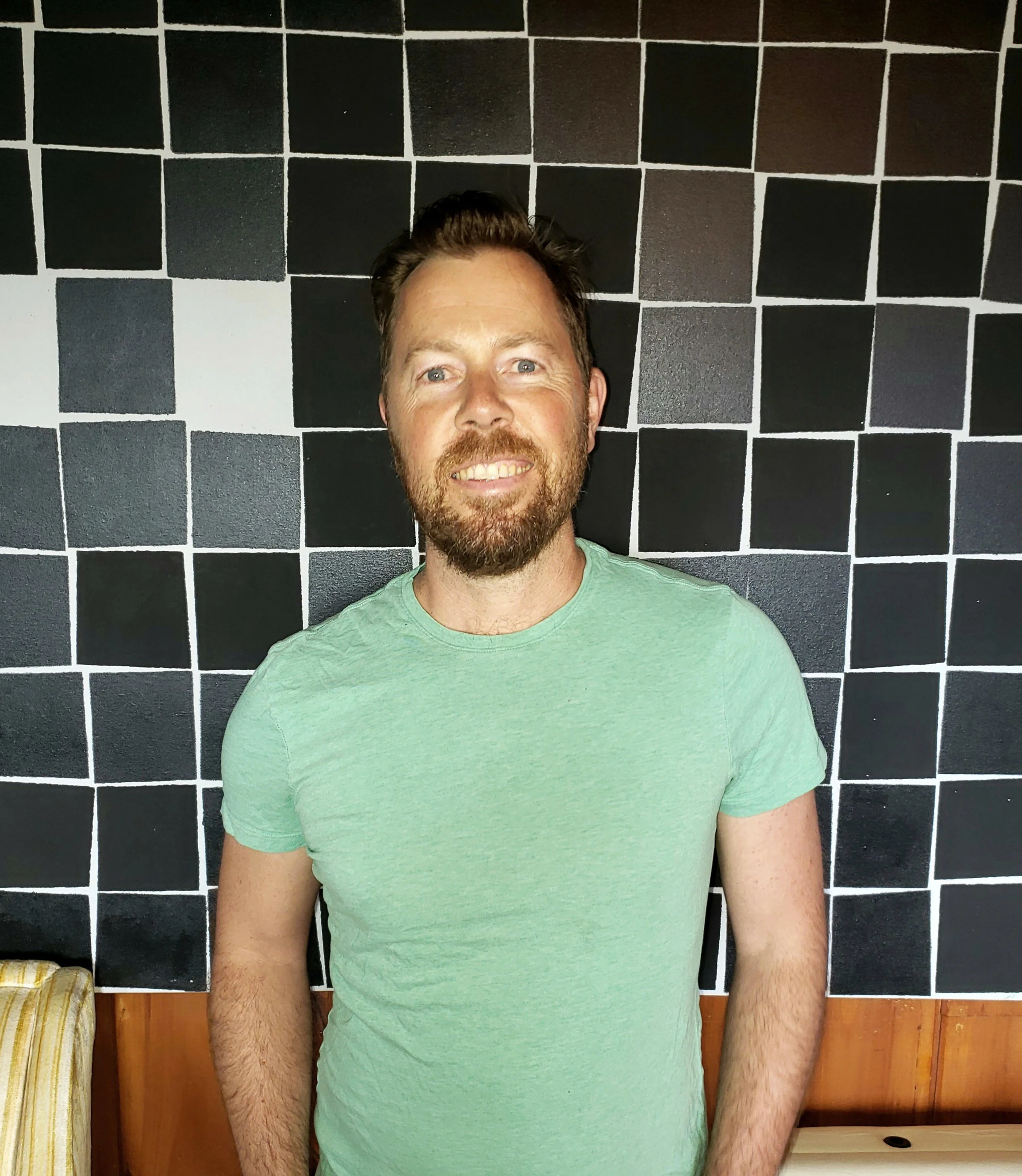Between Dimensions: Form, Perception, and the Power of the Unexpected
At Anne Haas Design, we believe that original art brings soul and substance to a space. It invites curiosity, stirs emotion, and stays with us long after we leave the room. In this third installment of our Artist Spotlight series, we’re thrilled to feature Vermont–based artist Will Patlove, whose striking, dimensional work challenges the boundaries of painting and sculpture and invites us to see differently.
We sat down with Will to talk about process, inspiration, and how the quiet rhythm of form can lead to something entirely unexpected.
A Quiet Spark
Will’s creative journey started, not with a dramatic breakthrough, but with a moment of quiet clarity in a middle school art class.
“We were drawing portraits, and I realized—oh, I can actually do this. I can make a drawing that looks like someone. That was the beginning of something.”
That early recognition sparked an awareness of his ability to translate perception into form—an idea that would become central to his work years later.
Minimalism, Form, and the Influence of Ellsworth Kelly
While Will’s early creations began with pencil and paper, it wasn’t until high school or college that he encountered the work of Ellsworth Kelly—an artist whose minimalist approach deeply resonated.
“Seeing that you could make art like that—so clean, so simple—shifted how I thought about what art could be. It didn’t have to tell a story. It could just be about form.”
That influence is clear in Will’s work today: crisp, shaped canvases that often blur the line between two and three dimensions. Each piece explores spatial tension—what we assume we’re seeing versus what’s actually there.
A Style Rooted in Structure
When asked how he describes his own style, Will pauses, then offers:
“Shaped canvases. Minimalist. Color-field influenced. But it’s really about exploring the space between dimensions—between what we think we see and what’s physically present.”
His work plays with that dimensional ambiguity: flat surfaces that appear sculptural, or wall-mounted forms that defy easy classification. The result is a body of work that feels quietly radical—minimal, yet emotionally resonant.
Letting Form Take the Lead
Unlike artists who begin with concept or color, Will starts with shape.
“I think in structure first. People often assume I’m focused on color, but that comes later. I might choose a hue because I haven’t used it in a while—but really, the form drives everything.”
There’s something refreshingly honest in that. His work doesn’t aim to impress with layers of symbolism—it simply is—inviting viewers to respond instinctively.
A Process of Intuition and Image
Will’s creative rhythm is intuitive and unforced. New ideas often arrive during quiet moments.
“Just before falling asleep is when I think of things. I see images in my head. I’ll sketch them quickly, just pencil on paper. And usually, the finished piece ends up pretty close to that original sketch.”
His approach feels both grounded and fluid—rooted in instinct, yet precise in execution.
Inviting the Viewer to See
Will doesn’t create art to communicate a singular message. Instead, he offers something more generous: the space to observe without expectation.
“I want people to stop trying to figure it out. To let go of the urge to name what they’re seeing. Just experience it.”
That openness makes his work ideal for interior spaces—pieces that evolve with their surroundings and feel alive in different ways depending on light, placement, and point of view.
Following the Thread
When creative blocks arise, Will doesn’t try to push through.
“I stop. I wait. That’s always worked better for me.”
And when inspiration returns, it often does so in a sequence—each finished work giving rise to the next.
“There’s always a question one piece leaves me with. That question becomes the next piece.”
For Fellow Artists (and Art Lovers)
Will’s advice to emerging creatives is simple but profound:
“Try to make something you’ve never seen before. That’s the goal. If I’ve already seen it, I move on. I want to find the newness.”
Art That Lives With You
While he doesn’t always think about how his work fits into interiors, Will admits he’s fascinated by the way art interacts with space—and with people.
“I just hope people keep seeing new things in the work. That it stays interesting. That it shifts over time depending on who’s looking and where it lives.”
Will Patlove
At Anne Haas Design, that’s exactly the kind of art we love bringing into our clients’ homes : pieces that hold presence, invite reflection, and quietly expand the space around them. If you're ready to incorporate original artwork into your home, or want help discovering artists whose work resonates with your vision—we’d love to help. Contact us to begin the conversation.








